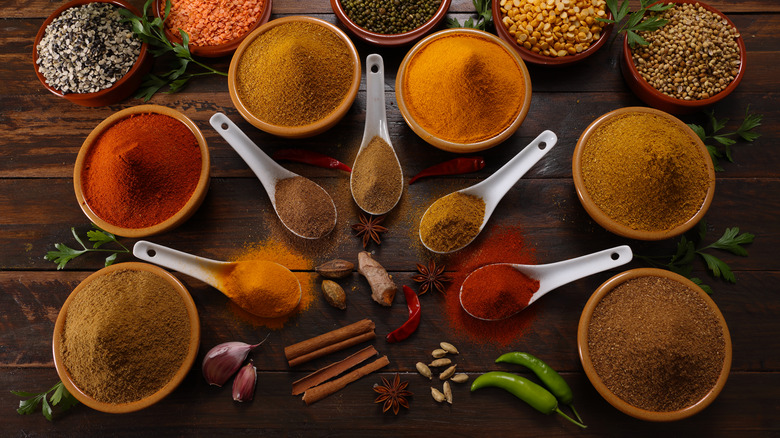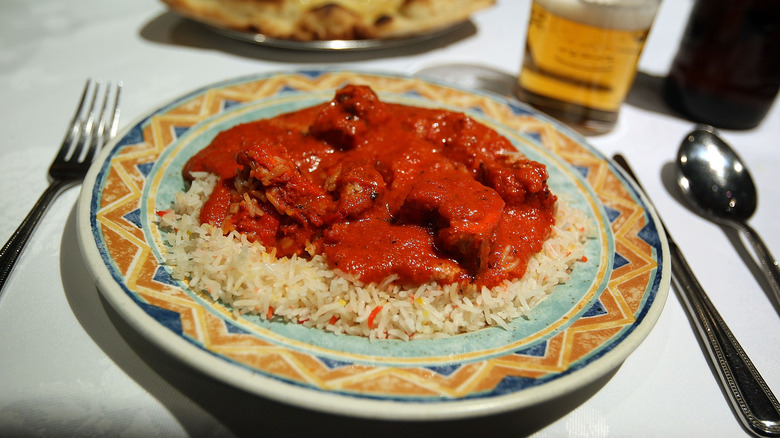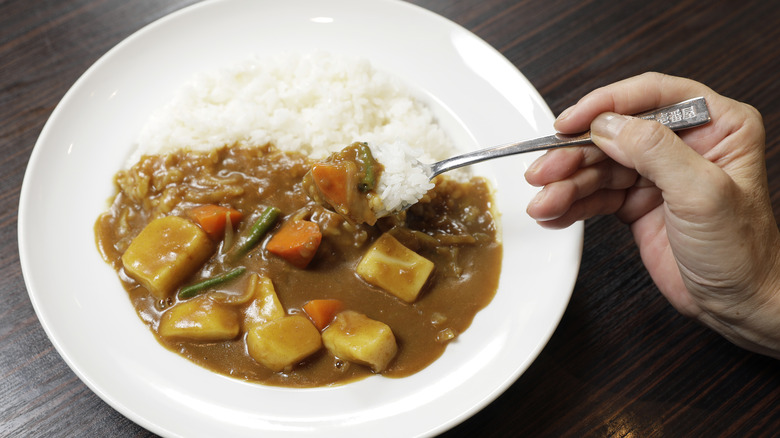The Key Difference Between Japanese And Indian Curry
Curry as we know it is a versatile vessel for any number of culinary cultures to make a flavorful mark on the world. Two popular choices are Japanese curry and Indian curry, both of which can transport you instantly to those countries from the smell of the spices alone.
But while these two categories of dishes share a name, they are very different. Japanese curry tends to refer to a specific dish, or a few variations on that dish, while Indian curry can cover any number of meals as different as tikka masala, saag, and vindaloo. All curries, no matter where they're from, are simply gravy-based dishes that have flavorful, aromatic spices.
Both Japanese and Indian curry are sauce-based dishes, sometimes containing meat, a few vegetables, and a variety of spices. Curry is usually served over rice — though Indian ones may be served with breads like naan or roti as well. But while Indian curries are generally made with various spice blends that can create a whole range of flavors, from mild and creamy to spicy and smoky, Japanese curry is often made from curry blocks that create a roux-based sauce.
What is Indian curry?
Now, defining Indian curry is a complicated matter, as it requires a bit of historical unraveling. The word curry isn't used in India, and globally it refers to, essentially, any Indian dish that involves a soupy or gravy-like base served over rice. The term comes from Britain's colonial rule over India, during which British soldiers lumped all saucy Indian dishes under the term. It was most likely borrowed from the Portuguese, who called it "caril," a bastardization of the Tamil word for sauce, "kari." Today, "Indian curry" as a designation can be a loaded term to Indians and the South Asian diaspora at large.
Some common Indian dishes that fall under this bracket are tikka masala, made with tomato, cream, and spices; korma, made with yogurt, spices, braised meat, and fried onions; and jalfrezi, a spicy stir-fried dish with bell peppers, cilantro, and green chili. Spices across all dishes are highly varied but can include things like cumin, turmeric, coriander, cardamom, cilantro, ginger, asafoetida, fenugreek, cinnamon, star anise, fennel seeds, mace, cloves, mustard seeds, red chili, alongside the popular spice blend garam masala (which contains many of the aforementioned spices). Tomatoes may or may not be found in many of these dishes, and a creamy element from heavy cream, yogurt, or coconut cream is popular. Chicken and lamb are common proteins in these dishes, as is the thick cheese paneer — while beef is rare.
What is Japanese curry?
Japanese curry is much easier to narrow down, as its origins lie in the mass-produced curry spice packets and curry sauce cubes popularized, again, by the British as they colonized India. Curry powder was brought to Japan by the British navy during the Meiji Restoration, and was adopted over time as a popular local dish. These curry blocks are the base of all Japanese curries, creating a much more reliable and homogenized flavor profile.
Japanese curry has a thick, gravy-like texture and a dark brown color, and is often made with carrots, potatoes, onions, and meat. It is often topped with a crispy fried piece of meat, called katsu, and like its Indian cousins, Japanese curry is served over rice. Rather than containing a unique blend of spices, Japanese curry is often made from pre-packaged commercial curry blocks, which generally contain "curry powder" (spices unspecified, but likelyturmeric, coriander, cumin. fenugreek, black pepper, and cinnamon), MSG, various preservatives, and flour. The added flour turns the blocks into a roux once they are added to the other ingredients in a pan, creating a thick, velvety sauce. You can make it from scratch if you'd like — but be prepared to mill some apples and gather your own curry spice blend.



